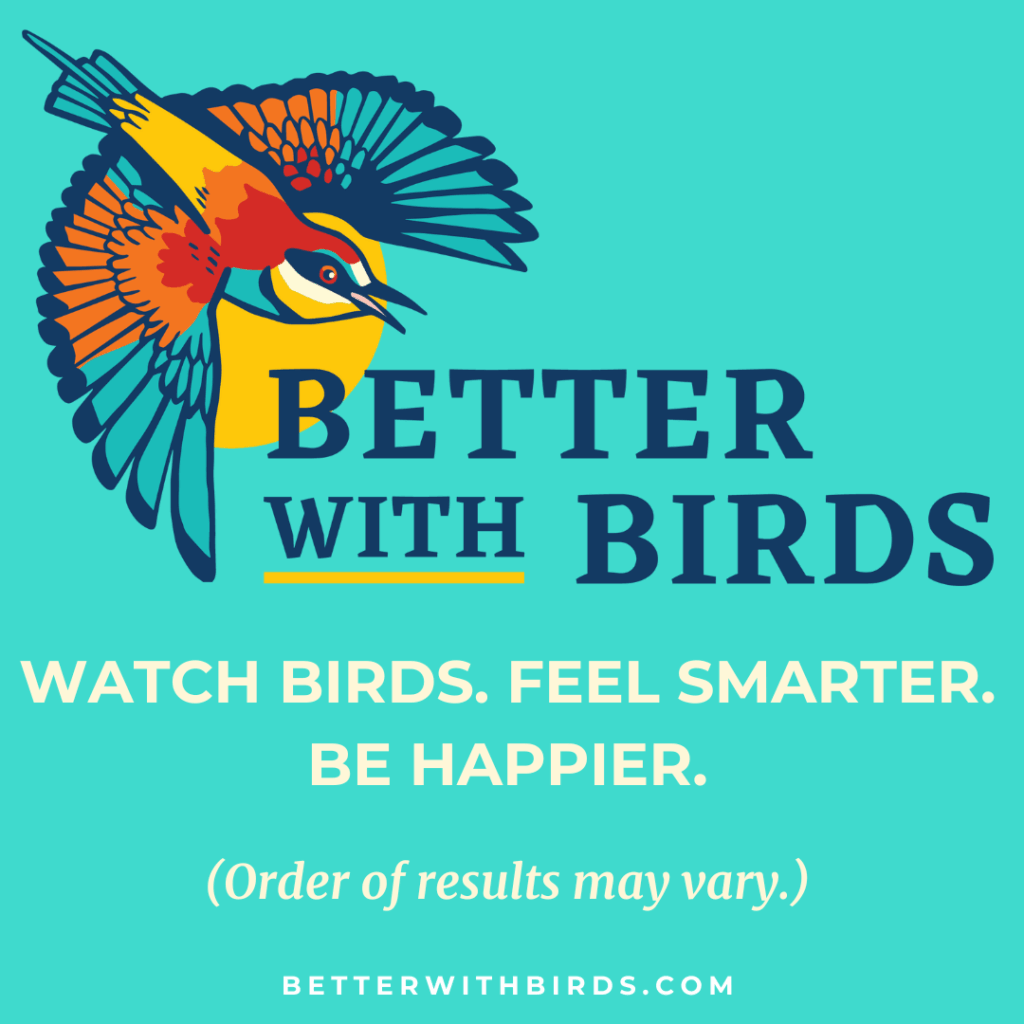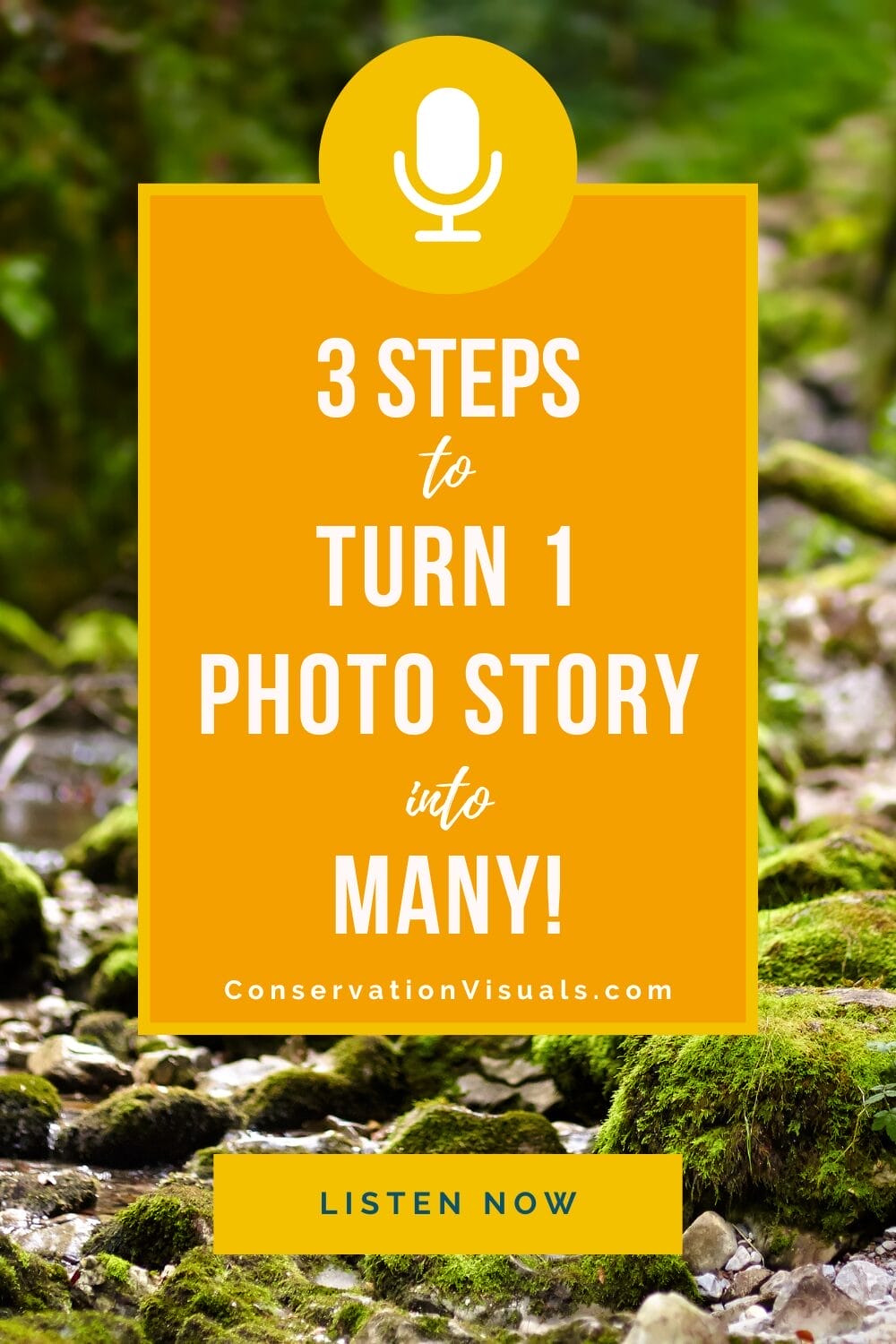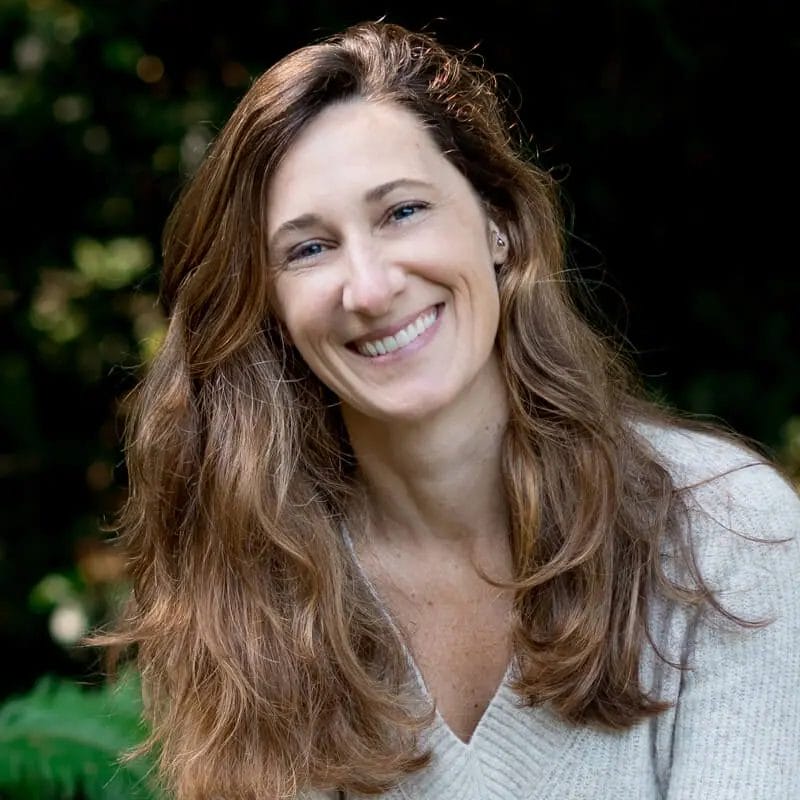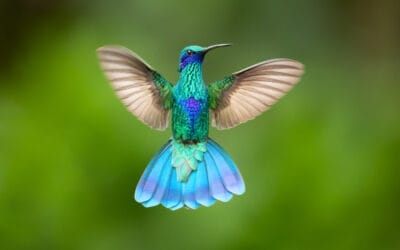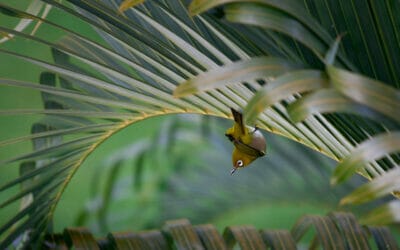Being an influential conservation photographer means getting important stories in front of as many people as possible. So, here’s the why and the HOW of transforming a single story idea into many published stories so you can reach different audiences to maximize your impact (and maximize the return on your story-creation time and energy investment!).
Accomplish more reach for your photo stories with less work
You spend a lot of time and effort creating beautifully crafted photo stories about conservation issues that are REALLY important.
So it’s no wonder you want to make sure those stories get in front of as many eyes as possible.
Understanding how to repurpose your photo stories, or come up with fresh ways to get that out into the world in front of different audiences, will help you accomplish MORE impact with LESS work.
Imagine the possibilities if you could take a single photo story and tailor it for multiple audiences!
We dig into tons of detail in the podcast episode, plus look at a case study from one of my students, so be sure to tap the play button.
But if you’d like the quick low-down, here’s a strategic guide on how to breathe new life into your photo stories, ensuring they resonate far and wide.
Step 1: Pin Down the Core Message
Every story has its heart. What’s the big message you’re driving at, and why does it matter? This central theme will anchor the various iterations of your story, maintaining consistency even as you adapt the narrative to different audiences.
Step 2: Know Your Audience
Who’s tuning in? Identifying your audience is crucial because it informs how you’ll tweak your story to catch their interest. Whether it’s adjusting the jargon, swapping out visuals, or shifting the story’s angle, understanding your audience allows you to craft content that speaks directly to them.
Recommended listening: Episode 21 – Want Change? These 3 Essential Questions are More Important Than Your Camera Skills
Step 3: Creatively Repurpose Your Content
Now, with your audience in mind, it’s time to get creative. Consider the many forms your story could take:
- Educational Articles that delve into the nuts and bolts for an academic or scientifically inclined audience, emphasizing the research behind your story.
- Feature Stories for lifestyle magazines that connect the narrative to personal interests or day-to-day activities.
- Opinion Pieces that leverage a stronger call to action, suitable for platforms where advocacy and personal voice resonate.
From a Single Story to a Spectrum of Narratives
Let’s walk through an example to see this in action. Imagine you’ve documented a community’s effort to protect a local wildlife habitat. Here’s how you could transform this single story to reach broader audiences:
- For Local News: Highlight the community benefits, like flood prevention, which directly connects conservation efforts to local well-being.
- For a Science Magazine: Dive deep into the ecological significance, discussing the habitat’s unique species and conservation strategies with a detail-rich, scientific slant.
- For a Travel Magazine: Showcase the habitat’s natural beauty, positioning it as a hidden gem for eco-tourists, thereby promoting conservation through increased visitor interest.
The Impact of Story Diversification
By diversifying your storytelling approach, not only do you expand your reach, but you also deepen engagement, encouraging a wider array of actions from community support to scientific involvement or even boosting eco-tourism. Each narrative angle not only informs but also inspires different sectors of your audience to contribute to the conservation efforts in meaningful ways.


